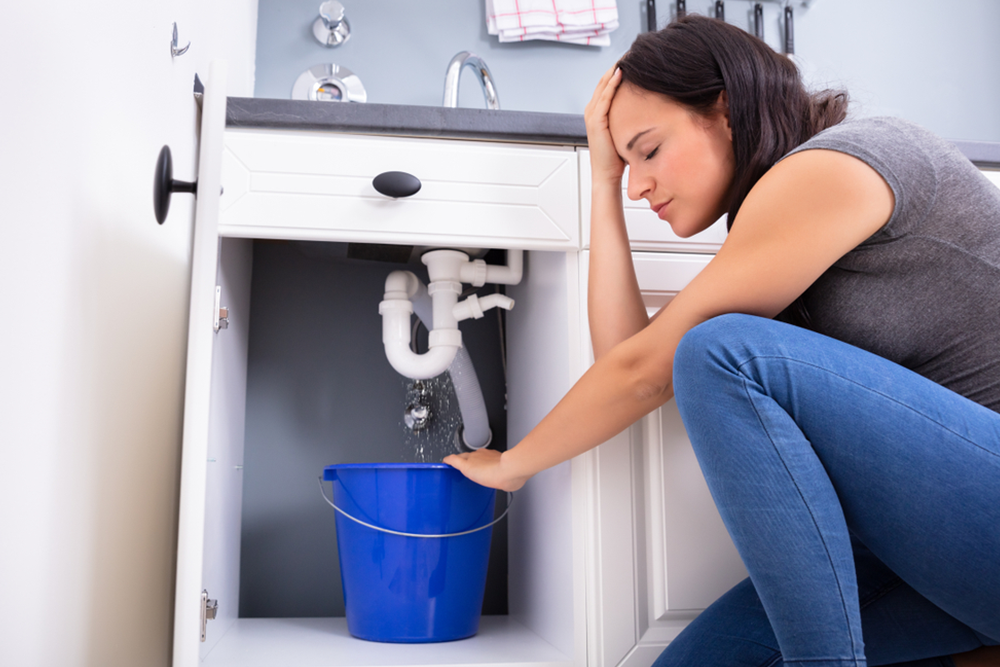Leading Methods for Resolving a Leak in Your Garbage Disposal
BookThey are making a few good pointers related to Tips on Fixing a Leaking Garbage Disposal as a whole in this great article beneath.

Garbage disposals are necessary kitchen devices that aid in taking care of food waste successfully. Nevertheless, a dripping waste disposal unit can be a frustrating and unpleasant problem to manage. Thankfully, several leakages can be taken care of easily with a couple of basic actions. In this write-up, we will certainly review exactly how to take care of a leaking waste disposal unit effectively.
Intro
Garbage disposals are set up under kitchen sinks and are designed to shred food waste into smaller sized pieces, allowing it to travel through the pipes system quickly. While these devices are usually trustworthy, leaks can take place over time due to damage, loose connections, or damage to the system.
Step-by-Step Guide to Fixing a Dripping Waste Disposal Unit
Switch off the Power
Before attempting any type of repair services, make certain that the power to the garbage disposal device is shut off to prevent the threat of electrical shock.
Locate the Leak
Recognize the exact location of the leakage and determine the reason
Tighten up Connections
Utilize a wrench to tighten up any kind of loosened connections between the disposal unit and the pipes system.
Replace Seals or Gaskets
If the leakage results from used seals or gaskets, get rid of the old components and replace them with new ones.
Patching Fractures or Openings
For splits or openings in the disposal unit, usage epoxy or an appropriate patching product to secure the damaged area.
Recognizing the Resource of the Leak
Before trying to fix a leaking garbage disposal, it is essential to recognize the resource of the leak. This can generally be done via visual evaluation or by carrying out straightforward tests.
Visual Examination
Check the garbage disposal device carefully for any indicators of water leak. Pay very close attention to areas around seals, gaskets, and connection factors.
Checking for Leakages
One method to evaluate for leaks is by running water via the disposal device and looking for any type of visible indications of leak.
Common Root Causes Of Leakages in Garbage Disposals
Worn Seals and Gaskets
Seals and gaskets play an essential role in stopping water from dripping out of the waste disposal unit. With time, these elements can deteriorate, leading to leakages around the disposal system.
Loose Connections
The connections in between the waste disposal unit and the plumbing system can end up being loosened over time, triggering water to leak out during procedure.
Fractures or Openings in the Disposal Device
Physical damages to the waste disposal unit, such as fractures or holes in the real estate, can additionally lead to leaks.
Devices and Products Needed for Fixing a Dripping Garbage Disposal
Prior to starting the repair work procedure, collect the essential devices and materials, including a screwdriver, adjustable wrench, plumbing technician's putty, replacement seals or gaskets, and epoxy or patching product for repairing cracks or holes.
Evaluating the Waste Disposal Unit After Repair
As soon as the repair work is full, evaluate the garbage disposal by running water through it to guarantee that the leakage has been fixed.
Preventive Upkeep Tips to Stay Clear Of Future Leakages
To prevent future leaks, it is essential to perform routine upkeep on your garbage disposal. This includes maintaining it clean, staying clear of putting non-food things or tough objects down the disposal, and occasionally checking for leakages or other issues.
Final thought
To conclude, dealing with a leaking waste disposal unit is a reasonably simple process that can be completed with fundamental devices and materials. By adhering to the actions detailed in this short article and practicing preventive maintenance, you can maintain your waste disposal unit in good working problem and prevent pricey fixings in the future.
What to Do About a Leaking Garbage Disposal
A leaking garbage disposal often goes unnoticed until you confront a sopping cabinet, a foul-smelling puddle, or an audible drip-drip-drip from the unit. The fix can be frustrating, too, because the leak can stem from a number of components in the system. Fortunately, with a little sleuthing, you can zero in on the leak and—depending on the exact location—stop the icky oozing and repair the component that caused it. Worst case scenario, if it turns out that the garbage disposal must be replaced, installing a new one is a reasonable do-it-yourself task for those with basic plumbing skills. Read on to keep the cash you’d otherwise hand over to a pro.
Prepare to find the leak
Prior to testing the garbage disposal for leaks, unplug it at the wall outlet and turn off the power from the breaker box to prevent electrical shock. Then insert a watertight sink stopper into your sink drain and wipe the unit dry with a clean cloth. In any handy container, mix a few drops of food coloring into a few cups of water, and pour the dyed water onto the sink stopper to help you locate the leak.
Investigate the source
the top, where the disposal meets the sink drain the side, where the dishwasher hose or main drain pipe connects to the disposal or the bottom of the unit Inspect each of these locations while gliding a light-colored rag over the unit; the dyed water will readily show on the rag and reveal the location of the leak. If a leak isn’t immediately apparent, remove the sink stopper and pour a few more cups of dyed water down the sink drain, then check for leaks again. Leaks near the top of the unit are more likely to show themselves while the sink is plugged, while side and bottom leaks are more noticeable while the sink is unplugged.
The metal sink flange that sits directly inside the sink drain is typically sealed around the top with plumber’s putty (a clay-like sealant) and then secured from under the sink with bolts. If the plumber’s putty deteriorates, or the bolts loosen, the flange can no longer form a watertight seal between the sink drain and the disposal—which could cause a leak at the top of the unit.
To reseal the leaky flange, you must first detach the garbage disposal. Start by loosening the screws securing the main drain pipe to the disposal, then loosen the screws in the metal clamp securing the dishwasher hose to the disposal and detach the drain pipe and dishwasher hose from the disposal. Loosen the screws in the mounting ring that connects the disposal to the metal mounting assembly beneath the sink, then pull down the disposal and carefully set it on a clean, dry surface. Loosen the bolts in the mounting assembly with a wrench, then pull down the mounting assembly and set it near the disposal.

As a passionate reader about How to fix a pretty consistent leak from my garbage disposal, I imagined sharing that excerpt was a great idea. Sharing is nice. Helping people is fun. Thanks so much for going through it.
Get An Estimate